An apex predator, also known as an alpha predator, top predator, or super predator, is a species of animal that resides at the top of the food chain within its ecosystem. This means that there are no other natural predators that prey on the apex predator, and it is not hunted for food by any other species. Apex predators play a crucial role in their ecosystems by controlling the population of prey animals and maintaining a balance in the ecosystem. Examples of apex predators include lions, tigers, great white sharks, killer whales, and polar bears.
Apex predators are the kings and queens of the animal kingdom. They rule over their respective habitats, preying on weaker animals and maintaining a balance in the ecosystem. These magnificent creatures are not only awe-inspiring but also critical to the survival of their ecosystems. Here are the top 10 most stunning apex predators:
1. Snow Leopard
Snow leopards are indeed considered apex predators, as they are at the top of the food chain in their ecosystem. They are highly adapted to their harsh mountainous habitat, and are known for their incredible agility and strength. Their diet primarily consists of wild sheep and goats, but they also occasionally hunt smaller mammals like marmots and hares.

Snow leopards play a critical role in maintaining the balance of their ecosystem, as they help to control the populations of herbivores and prevent overgrazing. They are also important cultural and spiritual symbols for the people who live in the regions where they are found, and are highly valued for their beauty and grace.
Snow leopards have a number of adaptations and characteristics that make them highly effective predators in their harsh mountainous habitat. Here are some of the key factors that make snow leopards such skilled hunters:
Camouflage: Snow leopards have thick, spotted fur that helps them blend into their rocky environment and avoid detection by potential prey.
Agility: Snow leopards are incredibly agile, with strong hind legs that allow them to leap up to 30 feet in a single bound. This makes them excellent at stalking and ambushing their prey.
Strength: Snow leopards are powerful animals, with strong jaws and neck muscles that allow them to take down large prey like wild sheep and goats.
Adaptations to high altitude: Snow leopards are adapted to life at high altitudes, with large nasal cavities that help them breathe in thin air and large paws that distribute their weight on soft snow.
Patience: Snow leopards are patient hunters, known for their ability to stalk their prey for hours or even days before finally making a move.
Overall, the combination of stealth, strength, agility, and patience makes snow leopards highly effective hunters and apex predators in their ecosystem.
2. Great White Shark
The great white shark is widely recognized as one of the most iconic apex predators in the world’s oceans. Here are some of the key factors that make this species such an effective hunter:
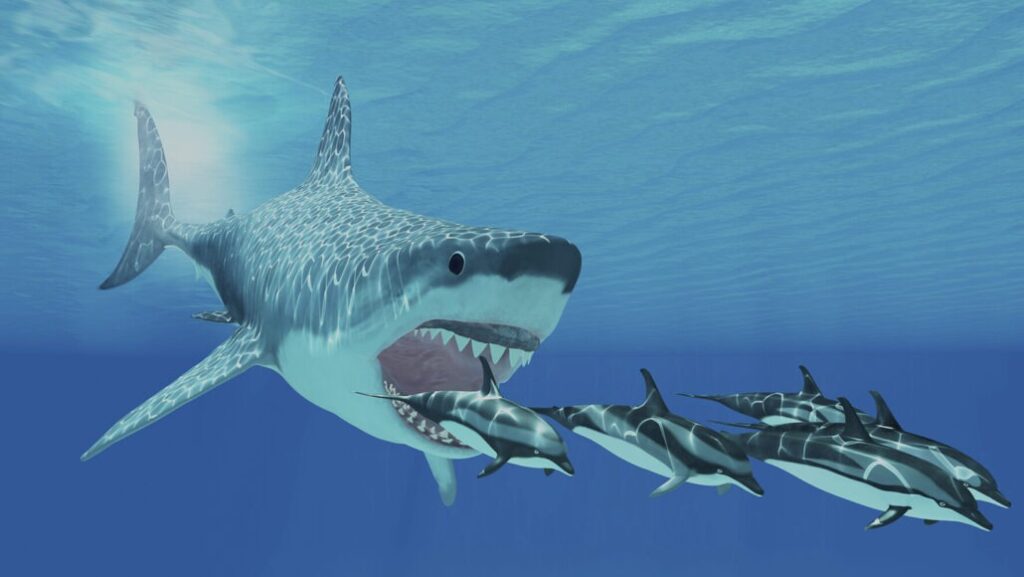
Size and Strength: Great white sharks are one of the largest predatory fish in the ocean, with adults averaging around 4.6 meters (15 feet) in length and weighing over 1,000 kilograms (2,200 pounds). They have powerful jaws and razor-sharp teeth that allow them to take down prey much larger than themselves.
Speed: Great white sharks are incredibly fast swimmers, capable of reaching speeds of up to 56 kilometers per hour (35 miles per hour). This enables them to quickly chase down prey that may be trying to escape.
Senses: Great white sharks have highly developed senses, including excellent vision, smell, and hearing. They can detect the electromagnetic fields generated by other animals, which helps them locate prey even in murky water.
Intelligence: Great white sharks are highly intelligent animals, capable of learning from experience and adapting their hunting strategies accordingly. They are also known to cooperate with each other in some situations, such as when hunting large prey like seals.
Role in Ecosystem: Great white sharks play a crucial role in regulating the populations of marine mammals and other fish species. As apex predators, they help to maintain the balance of the ocean’s food web by keeping populations of lower-level predators in check.
Overall, the combination of size, strength, speed, senses, intelligence, and ecological importance makes the great white shark a formidable and fascinating apex predator.
3. Polar Bear
Polar bears are recognized as one of the most iconic apex predators in the Arctic ecosystem. Here are some of the key factors that make them highly effective hunters:

Adaptations to the Arctic environment: Polar bears are highly adapted to life in the harsh Arctic environment, with thick fur and a layer of blubber that helps keep them warm in cold temperatures. They also have large paws with non-slip pads that provide traction on ice and snow.
Size and strength: Polar bears are the largest land carnivores in the world, with adult males weighing up to 800 kg (1,800 pounds) and standing over 2 meters (6 feet) tall. They have powerful jaws and sharp claws that allow them to take down large prey like seals.
Excellent sense of smell: Polar bears have an incredibly acute sense of smell, which allows them to detect prey from a great distance. They can even detect the scent of a seal’s breathing hole under several feet of snow and ice.
Opportunistic hunting strategies: Polar bears are opportunistic hunters, meaning they will take advantage of whatever prey is available to them. They primarily hunt seals, but will also scavenge from the carcasses of whales and other animals.
Role in the Arctic ecosystem: As apex predators, polar bears play a crucial role in regulating the populations of seals and other Arctic mammals. They help to maintain the balance of the ecosystem by keeping these populations in check.
4. Saltwater Crocodile
Saltwater crocodiles are one of the largest and most powerful predators in the world, and are considered apex predators in their habitat. Here are some of the key factors that make them such formidable hunters:
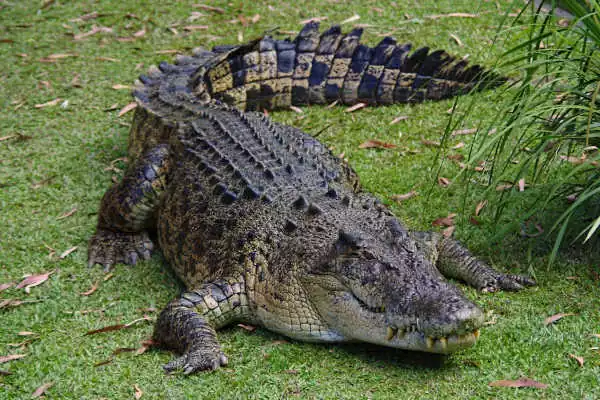
Size and strength: Saltwater crocodiles are the largest living reptiles, with males reaching lengths of up to 6 meters (20 feet) and weighing over 1,000 kilograms (2,200 pounds). They have powerful jaws and sharp teeth that can crush bone and tear flesh.
Ambush hunting strategy: Saltwater crocodiles are ambush predators, meaning they lie in wait for their prey and then launch a surprise attack. They are known for their ability to remain motionless for long periods of time, making them difficult to spot.
Adaptations for aquatic life: Saltwater crocodiles are well adapted to life in the water, with streamlined bodies, webbed feet, and powerful tails that enable them to move through the water quickly and silently.
Opportunistic diet: Saltwater crocodiles are opportunistic hunters, and will eat almost anything they can catch, including fish, birds, mammals, and even other crocodiles.
Ecological importance: Saltwater crocodiles play a key role in their ecosystem, controlling the populations of prey species and preventing overgrazing and other imbalances in the food web.
in short, the combination of size and strength, ambush hunting strategy, adaptations for aquatic life, opportunistic diet, and ecological importance make saltwater crocodiles one of the most impressive and dangerous predators in the world.
5. Siberian Tiger
The Siberian tiger, also known as the Amur tiger, is one of the largest and most impressive predators on Earth. Here are some of the key factors that make them highly effective hunters:

Size and strength: Siberian tigers are the largest cats in the world, with males weighing up to 300 kilograms (660 pounds). They have powerful muscles and strong jaws that allow them to take down large prey.
Stealth and agility: Siberian tigers are highly agile and can move through their forest habitat with great speed and stealth. They use this to their advantage when hunting prey, stalking and ambushing them from close range.
Hunting strategy: Siberian tigers are ambush predators, relying on their strength and stealth to catch prey by surprise. They will often wait patiently near a watering hole or in a strategic location before making their move.
Adaptations for cold climate: Siberian tigers are adapted to life in cold climates, with a thick coat of fur and a layer of fat that helps them stay warm. They are also able to move through deep snow with ease.
Ecological importance: As apex predators, Siberian tigers play a crucial role in regulating the populations of prey species in their habitat. This helps to maintain a healthy balance in the ecosystem and prevents overgrazing and other imbalances in the food web.
Overall, the combination of size and strength, stealth and agility, hunting strategy, adaptations for cold climate, and ecological importance make the Siberian tiger a highly effective and fascinating predator.
6. Wolf
Wolves are highly effective predators and play a vital role in maintaining the balance of many ecosystems around the world. Here are some of the key factors that make them such formidable hunters:
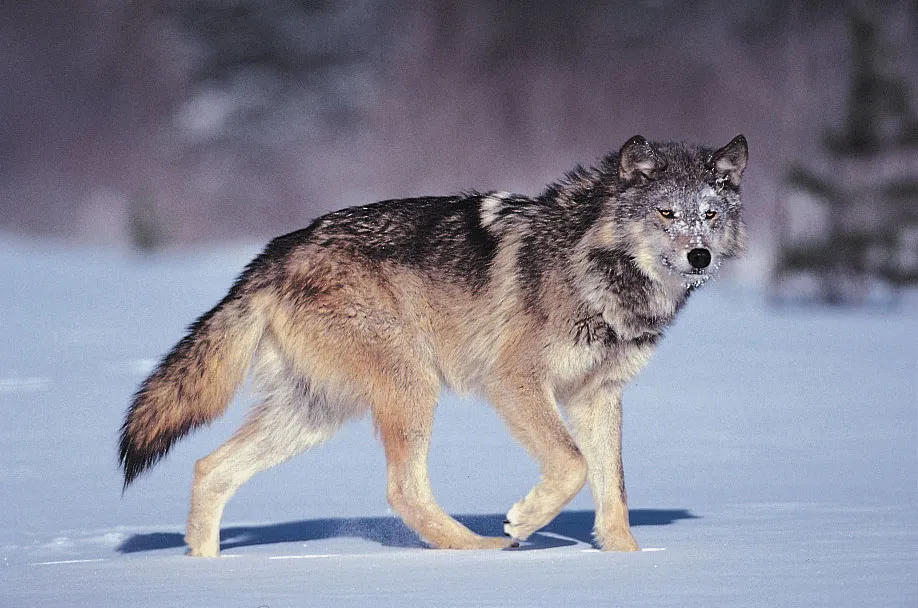
Pack hunting: Wolves are social animals that often hunt in packs, which allows them to take down large prey that would be too difficult for a single wolf to tackle. They work together to coordinate their attacks and often use complex tactics to outmaneuver their prey.
Adaptability: Wolves are highly adaptable and can survive in a wide range of environments, from forests and grasslands to tundras and deserts. They are also able to switch their diet depending on what prey is available in their area.
Speed and endurance: Wolves are fast and agile runners, capable of reaching speeds of up to 60 km/h (37 mph) over short distances. They also have incredible endurance, able to travel great distances in search of prey.
Sharp senses: Wolves have sharp senses of hearing, smell, and sight, which help them detect prey from long distances away. They can also track prey over great distances using their sense of smell.
Ecological importance: As apex predators, wolves play a crucial role in regulating the populations of prey species in their ecosystems. They help to maintain the balance of the food web by keeping populations in check and preventing overgrazing and other imbalances.
7. Killer Whale (Orca)
The killer whale, also known as the orca, is considered an apex predator, which means it is at the top of the food chain and has no natural predators. Orcas are known to hunt and feed on a wide range of prey, including fish, squid, seals, sea lions, dolphins, and even other whales. They are highly intelligent and have developed complex hunting strategies, making them one of the most successful predators in the ocean.

There are several factors that make the killer whale a highly successful predator:
Adaptability: Killer whales are incredibly adaptable and can hunt a wide variety of prey. They are also known to adapt their hunting strategies to specific prey, making them more effective hunters.
Intelligence: Orcas are highly intelligent and have large, complex brains that allow them to learn and remember hunting techniques. They can also communicate and cooperate with one another to coordinate hunts.
Strength: Adult killer whales can weigh up to 6 tons and have powerful muscles and jaws that allow them to overpower their prey.
Speed: Orcas are incredibly fast swimmers, with top speeds of up to 34 miles per hour. This allows them to chase down and catch fast-moving prey like dolphins and tuna.
Social Structure: Killer whales live in highly social groups called pods. These pods can work together to hunt and capture larger prey like seals and other whales.
Stealth: Orcas are able to approach their prey silently from below, making it difficult for their prey to detect them until it’s too late.
8. African Wild Dog
The African Wild Dog, also known as the painted dog, is a highly successful predator. They are skilled hunters and have evolved unique adaptations that make them highly efficient at catching prey.
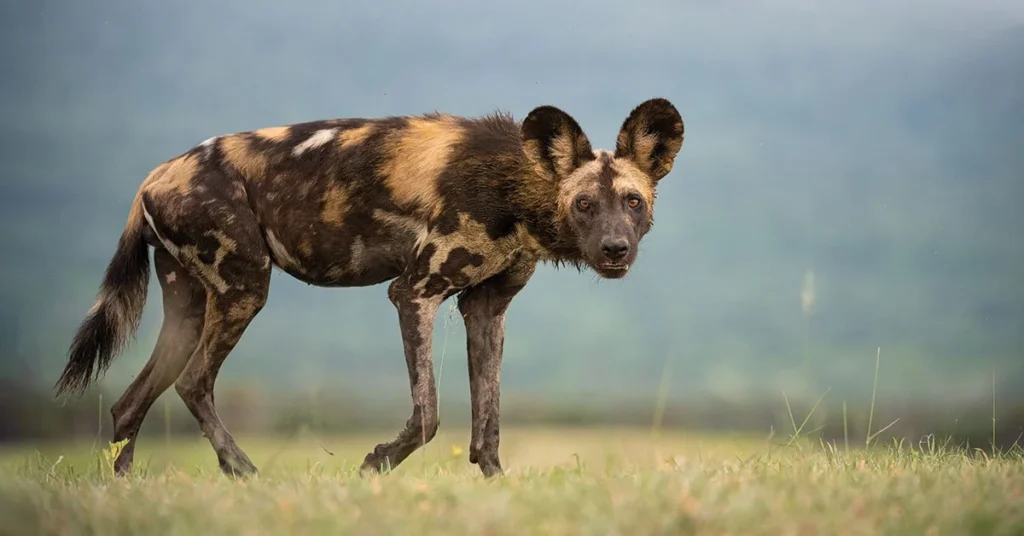
Here are some of the factors that make the African Wild Dog a good predator:
Endurance: African Wild Dogs are known for their incredible endurance. They are able to maintain a steady pace over long distances, allowing them to outlast their prey in a chase.
Speed: While not as fast as some other predators, African Wild Dogs are still capable of reaching speeds of up to 44 miles per hour in short bursts, allowing them to catch prey that is trying to escape.
Cooperation: African Wild Dogs live in highly social packs and work together to hunt. They use tactics such as surrounding their prey and taking turns chasing it to exhaust it.
Stamina: Unlike some predators that rely on short bursts of energy to catch their prey, African Wild Dogs have a high stamina and are able to keep up with their prey for long periods of time.
Hunting Techniques: African Wild Dogs are skilled hunters and have developed unique hunting techniques. For example, they will often hunt in the early morning or late afternoon when it is cooler and their prey is more active. They will also use teamwork to take down larger prey, such as antelopes and wildebeest.
All of these factors make the African Wild Dog a highly effective predator, capable of catching prey that is much larger than themselves.
9. Komodo Dragon
The Komodo dragon is a formidable predator. As the largest living lizard, they are apex predators in their ecosystem and have unique adaptations that make them highly efficient hunters.

Here are some factors that make the Komodo dragon a successful predator:
Powerful bite: Komodo dragons have a powerful bite that allows them to take down large prey. They have serrated teeth that can inflict deep wounds and strong jaw muscles that can generate a force of up to 60 pounds per square inch.
Venomous bite: In addition to their strong bite, Komodo dragons also have venomous saliva that can cause their prey to go into shock and become weak and disoriented.
Sense of smell: Komodo dragons have a highly developed sense of smell that allows them to detect the scent of their prey from long distances.
Stealth: Komodo dragons are able to blend into their surroundings and move quietly, making it easier for them to sneak up on their prey.
Patience: Komodo dragons are patient hunters and will often wait for their prey to come to them. They will lie in wait near watering holes or game trails until an opportunity presents itself.
Adaptability: While they are known for hunting large prey such as deer and water buffalo, Komodo dragons are also able to eat smaller prey such as insects and rodents, making them highly adaptable to their environment.
10. Golden Eagle
The golden eagle is a highly successful predator. They are skilled hunters and have evolved unique adaptations that make them highly efficient at catching prey.
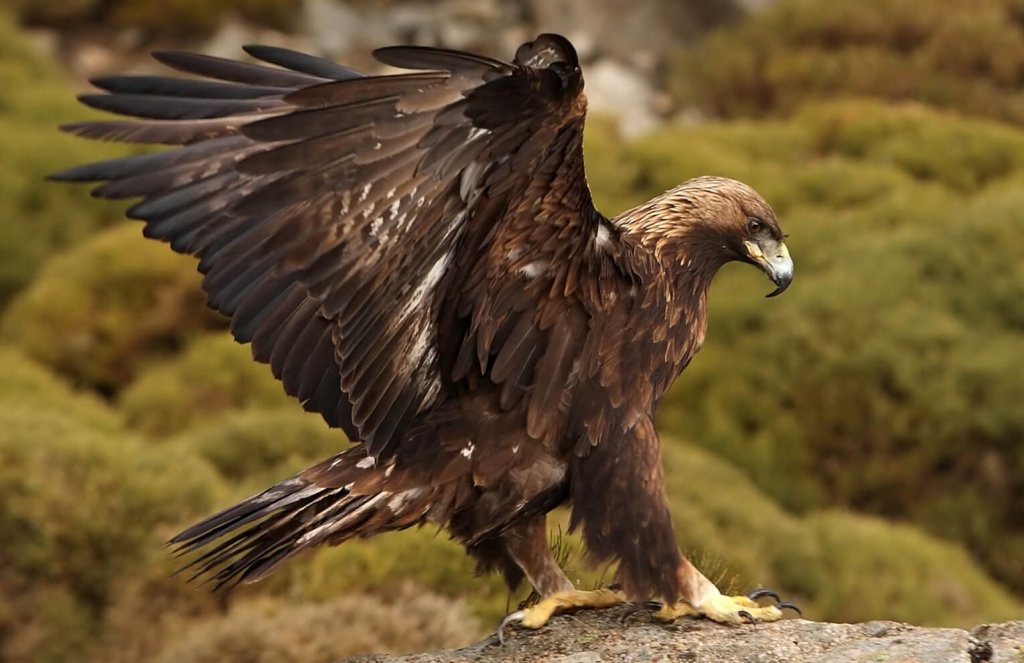
Here are some factors that make the golden eagle a good predator:
Vision: Golden eagles have excellent vision, with eyesight that is four to eight times better than a human’s. This allows them to spot prey from long distances and spot movement on the ground from high in the sky.
Strength: Golden eagles have powerful talons and a strong grip that allow them to grab onto and hold onto their prey. Their talons are also sharp and can easily pierce through the thick hides of their prey.
Speed: Golden eagles are capable of flying at speeds of up to 200 miles per hour when diving for prey. This allows them to surprise their prey and catch it off guard.
Adaptability: Golden eagles are able to hunt a wide variety of prey, including small mammals, birds, and even larger prey such as deer and mountain goats.
Hunting techniques: Golden eagles are skilled hunters and use a variety of hunting techniques depending on their prey. For example, they may hunt in pairs, with one eagle distracting the prey while the other swoops in for the kill.
Intelligence: Golden eagles are highly intelligent and have excellent problem-solving skills. They are able to adapt to changing circumstances and find new ways to catch prey.
Role of Apex Predators in Ecosystem:
Apex predators play a crucial role in the ecosystem. As the top predators in their food chain, they help to regulate the populations of their prey and keep the ecosystem in balance. Here are some ways that apex predators contribute to the health and stability of ecosystems:
Controlling population: Apex predators help to control the populations of their prey, preventing them from overgrazing or over consuming other resources in the ecosystem. This ensures that the ecosystem remains healthy and diverse.
Maintaining balance: By keeping the populations of their prey in check, apex predators help to maintain a balance in the food chain. This prevents any one species from becoming too dominant and disrupting the entire ecosystem.
Promoting biodiversity: By controlling the populations of their prey, apex predators help to promote biodiversity in the ecosystem. This allows for a greater variety of species to coexist and thrive in the ecosystem.
Facilitating nutrient cycling: Apex predators can also facilitate nutrient cycling in the ecosystem by controlling the populations of their prey. As prey animals die, they release nutrients back into the ecosystem, which can then be taken up by other organisms.
Indicating ecosystem health: The presence or absence of apex predators can be an indicator of the overall health of an ecosystem. If the populations of apex predators are declining, it may be a sign that the ecosystem is in trouble and needs to be addressed.
In summary, apex predators play a vital role in maintaining the health and stability of ecosystems. Their presence is essential for promoting biodiversity, controlling populations, and facilitating nutrient cycling. Protecting and conserving apex predators is important for maintaining healthy ecosystems and ensuring the long-term sustainability of our planet.

